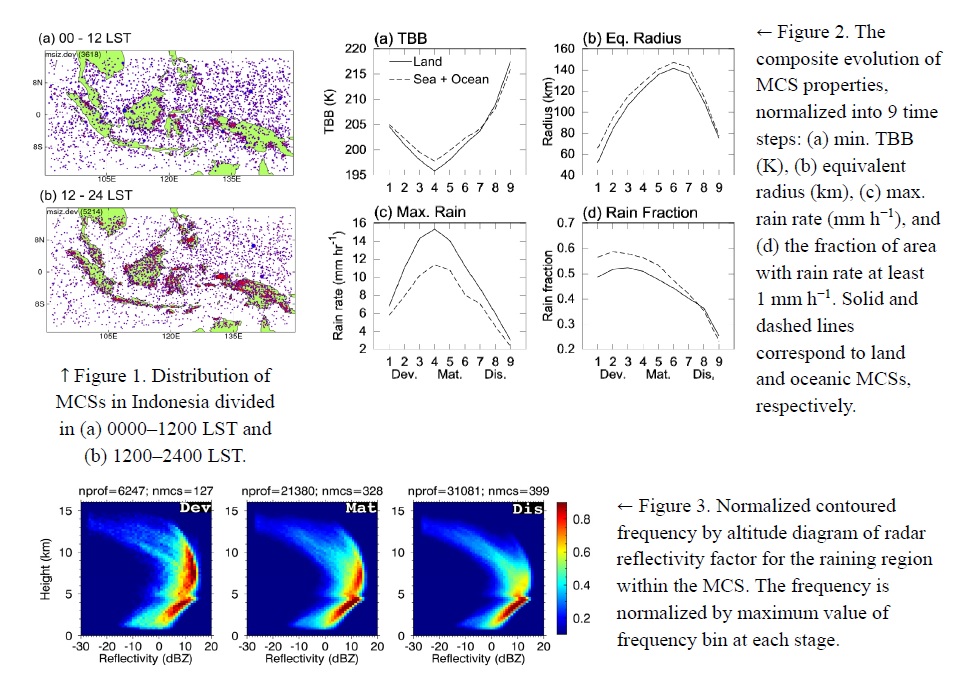Graphical Abstract
Putri, N. S., T. Hayasaka, and K. D. Whitehall, 2017: The properties of mesoscale convective systems in Indonesia detected using the Grab ’Em Tag ’Em Graph ’Em (GTG) algorithm. J. Meteor. Soc. Japan, 95, 391-409.
https://doi.org/10.2151/jmsj.2017-026
Graphical Abstract with highlights
Highlights:
- The “Grab ’em Tag ’em Graph ’em” (GTG) tracking algorithm is applied to the hourly MTSAT-1R infrared data to study the properties of mesoscale convective systems (MCSs) over Indonesia region, including their distribution and how their properties change from developing (Dev), mature (Mat), t dissipating (Dis) stages. The CloudSat data products are also used to obtain an insight to the microphysica properties of the MCSs at these different stages.
- The distribution of MCSs over Indonesia has a seasonal variation and a distinct diurnal pattern: large formation of MCSs over land (resp. sea and ocean) during the day (resp. night) (Fig. 1). Compared to the oceanic (sea+ocean) MCS, the land MCS exhibits colder min. brightness temperature (TBB), smaller size, larger max. rain rate, and smaller rain fraction (Fig. 2). The differences of these two MCS types are particularly visible in the developing and mature stages.
- The MCSs have distinct cloud microphysics at different stages. At the developing stage, the raining region shows large occurrence of radar reflectivity ≥ 10 dBZ extending from 6 to 11 km, suggesting the presence of precipitating ice particles at these altitudes (Fig. 3). This mode becomes weaker in mature stage and the weakest in dissipating stage, indicating large hydrometeors no longer exist at the upper part of the raining region in dissipating stage. Within the MCS anvils, the dissipating stage shows a more uniform distribution of ice-particle effective radius compared to that shown by the developing and mature stages (figure not shown).







